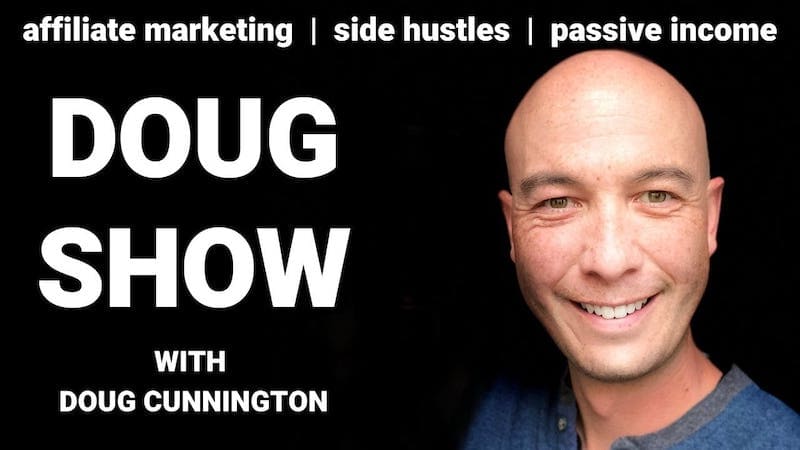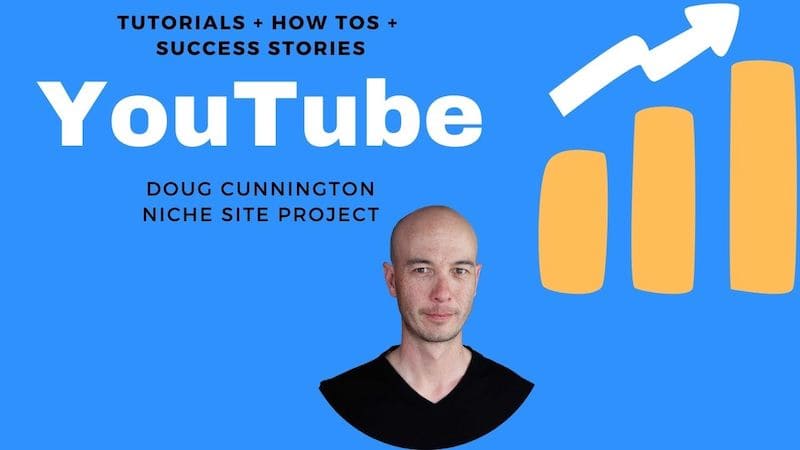Robin Eyre (Trailblazer360 Marketing) wrote this post after getting great results for a client using the keyword golden ratio. Here are his tips for KGR client work. You can check out my interview with him on YouTube if you want to see more.
For most small businesses and entrepreneurs getting organic traffic to a brand-new or small website is incredibly difficult. They have little content, nothing worth linking to, and therefore rank for very few keywords.
Many business owners fall into the trap of ‘build it, and they will come and have heard they should be blogging. If they do blog, their approach is often ‘post and pray’ writing on topics they think clients ask and not writing well. As their efforts fail to generate traffic and leads, they end up quitting.
The Keyword Golden Ratio (KGR) approach to ranking a website is typically associated with affiliate sites. I have found it works equally to rank small business websites, news websites, and ad-monetized websites.
We used the KGR approach for a consultant-client and now generate c. 10,000 users per month with only 21 blog posts with regular blog comments and leads.
We’ll call our client Sarah.
Creating Content with the KGR
Sarah is a 50-ish-year-old lady from the UK. She has a full-time job in IT sales, but her real interests lie elsewhere broadly in business coaching and wellbeing.
In mid-2017, we created her a website – what I call a brochure site with pages about who she is, the services she provides, and the like. Weeks after launch, it ranked for few keywords, if any, and had very few visitors. Understandably.
In July 2018, we started publishing content and posting on social media. We continued to publish one or two articles per month for the next 18 months and, by March 2020, had 20 blog posts. Another was added in September 2020. A slow burn, you might say.
We posted organically on Facebook, Twitter, and LinkedIn, but this, as expected, drew little traffic, and we stopped perhaps eight months later. Importantly, we stopped posting on LinkedIn as Sarah’s boss had noticed her content and profile were irrelevant to what she was actually doing at work.
We built links initially but only with citations and directories. Building (quality) links to a new site or one with precious little content is simply near impossible: you literally have nothing worth linking to unless you have been public speaking, in the news, or doing something whacky.
Once we had agreed on the broad topics, Sarah gave us carte blanche to write on whatever we felt fit. Most articles were KGR on a diverse range of topics, but her focus also shifted halfway through.
We just followed the KGR rules: monthly volume of <250, a low allintitle, on-topic and well-written! Each article was around 2,000 words.
Admittedly, keywords were sometimes difficult to find, and it felt like we were trying to shoehorn topics into rather clumsy search terms.
I did, however, want to mix it up with some ‘must have’ articles that may not have been strictly KGR but explained what my client did and what her clients might expect to see. For example, “What is a [insert profession]” – again well-written, and we now rank #1 for that keyword and are also the featured snippet.
Upon publishing, each article was immediately submitted to Google Search Console, and on occasions, we were able to rank within minutes on page #1. Our quickest was 45 seconds.
Traffic gradually increased from July 2018 but leveled off at 1,000-1,500 users per month for the whole of 2019.
Figure 1: Traffic by day, July 2018-Feb 2021

Figure 2: Traffic by month, July 2018-Feb 2021

However, it really took off in January 2020, again in May, and in September. In October, we had 10,200 users. I believe the cumulative effect of creating good content benefitted us, as did various Google algorithm updates.
Lockdowns in November and December 2020 and the Christmas period seemed to impact traffic, but we are now seeing c. 10,000 users per month, all from organic search.
Monitoring
Each article is written with a single, specific keyword in mind, and we track each one: one keyword per article. As of today, in early March 2021, for the 21 blog posts, on desktop, we have a UK visibility of 42% with:
- 5 x position #1 (2 x featured snippets)
- 8 x position #2
- 2 x position #3
- 1 x position #4
- 1 x position #7
- 2 x position #9
- The last two are on pages 3 and beyond
Mobile visibility is similar. Traffic is mainly from the USA and UK.
Lead Generation & Sales
If it was going so well, why did she stop blogging?
Traffic didn’t take off until May 2020, a couple of months after we stopped blogging, as it took time for Google to realize the ‘worth’ of the website.
This is also a side project for Sarah. She has a full-time job, and the site does not command her full attention – in fact, it commands very little of her attention at all.
I don’t think she looks at Google Analytics and would not know how many visitors she has, whether 10,000 visitors per month is a lot or a little, or what effort it took to actually get there.
With only 1,000 visitors per month during 2019, inquiries were naturally going to be few and far between. However, since traffic is now robust, there are regular inquiries, if not always on matters she can assist with.
Even by her own admission, Sarah spends little time marketing her business. Local business networking was her only activity (which is how we met), and while she did once publish in a local magazine, I knew it would not bear fruit. Working full-time as well, she has little time for much else.
It is now simply not her focus – just when it has started to take off!
By way of example, blog comments go unanswered: there are 12 comments awaiting moderation dating back to November 2020. We now find other people (competitors?) post replies to comments and questions.
Those leads she is not interested in she passes on to her business network.
She has also never written an email newsletter, done public speaking, or posted on YouTube.
I feel she fell into the ‘build it and they will come’ trap, expecting a flood of leads by simple virtue of owning a website. Managing expectations is so important.
These are by no means criticisms. We all have areas we prefer to focus on and limited hours in the day. But they do highlight opportunities that might exist if it were my business.
I think it has real potential.
What would I do differently?
- Build an ‘inhouse’ team of specialists if I couldn’t answer the topics myself
- Blog more especially on the popular topics
- Add affiliate links but only where necessary. This is her business. Why send people to affiliates if she provides that same service? It wouldn’t make sense.
- Create a YouTube channel. While presenting on YouTube isn’t for everyone, that is likely where the audience is
- Run webinars
- Build an email list
- Create offers and keep people coming back
If I wasn’t an expert in a particular field, I could build a team of consultants with particular specialisms.
As above, one of the biggest problems small businesses and one-person bands face is the absolute lack of traffic to their websites. Offering other specialists a platform with a ready-made audience where they are the in-house expert would be, to many, a godsend.
Either send all relevant leads to them on a cost per lead basis and/or allow them a slot every month on your webinar or YouTube channel for a fee. Some businesses would undoubtedly see the merit in this. Build up several experts, and you could soon have a flourishing audience on many topics and become a real authority.
Advice
Going forward, I would recommend content sprints though I appreciate cash flow is of major importance to small businesses, many of which have small budgets. Not only do sprints make you focus if we look at the length of time Google takes to recognize you as an industry leader, why spread it over several months or years? Get as much done as you reasonably can in a short period of time.
It’s also important to understand that you have to start somewhere. Expecting to rank for keywords with huge monthly search volumes will only disappoint you, so managing expectations is critical.
For me, the KGR seems to work not because it is exploiting a weak point in Google’s algorithm but because it focuses on a particular, less competitive topic. The bottom line is that you must write the best piece of content available. Writing anything that is only as good as what is already out there will not pay dividends. Make it the best piece of content by far.
An ideal keyword would fit the KGR ‘rules’, has a low keyword difficulty, few links pointing to the top 10 results, and few sites with high domain authorities fill the SERPs. If there are a couple of domains with a low(er) authority, then it has potential.
It also takes time to find a good keyword (you could be searching for a couple of hours).
Finally, research the keyword properly. Ask yourself what questions you might ask if you wanted that product or service and combine that with the content on existing websites in your own style.



